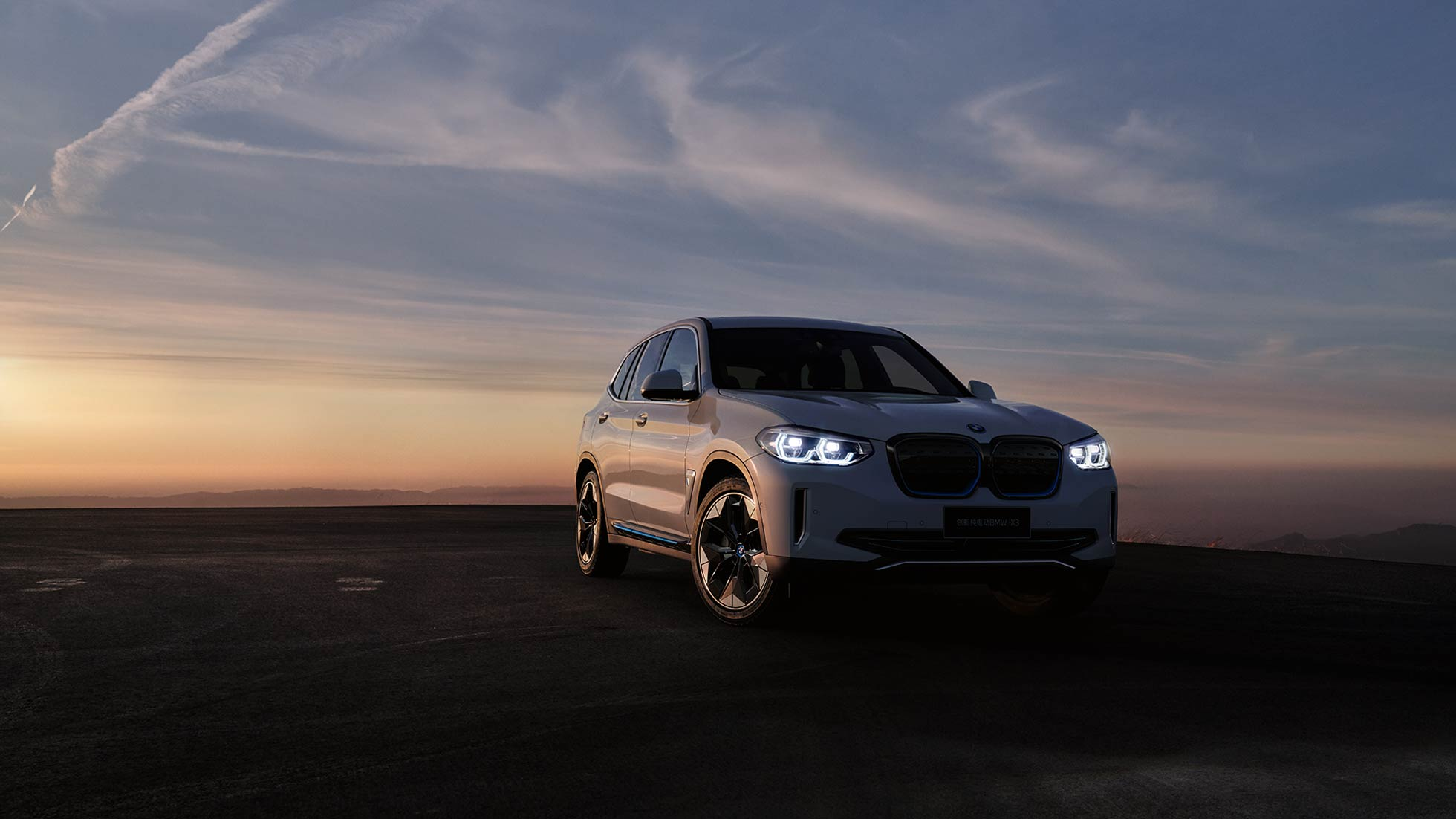Old Players Enter New Tracks
In China, when it comes to pure electric vehicles in recent years, people always turn their attention to Tesla and NIO, and seldom think of traditional car manufacturers.
Despite the constant controversy surrounding Tesla, it is almost universally recognized as a leader in pure electric vehicles. Domestic new energy vehicle brands also have their own unique characteristics and attract numerous fans.
Beyond the new forces that boast rapid iteration and attempt to overtake in the corners, old players have clearly recognized that the vast new energy market is a battleground for the military.
The protagonist of this article, the BMW iX3, is a pure electric car from a century-old luxury brand that inherits the BMW luxury driving pleasure.
After experiencing it on a weekend two-day holiday, as a subjective independent third party and a dual owner of NIO (pure electric) and Audi (fuel), I would like to share some personal feelings with you.
Yet another BMW
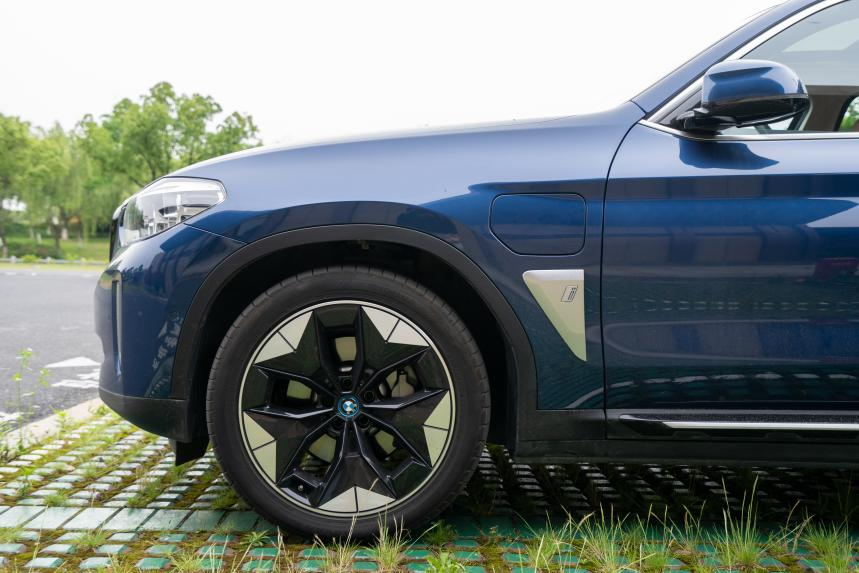
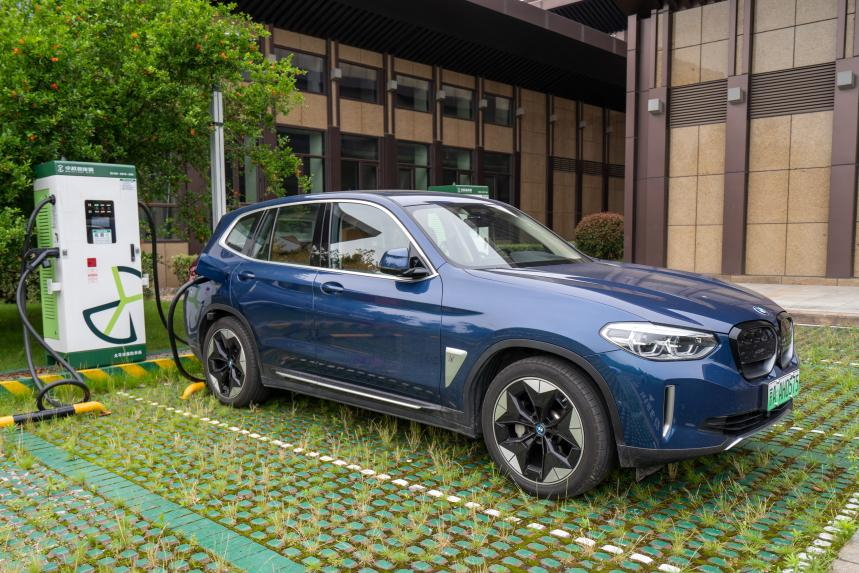
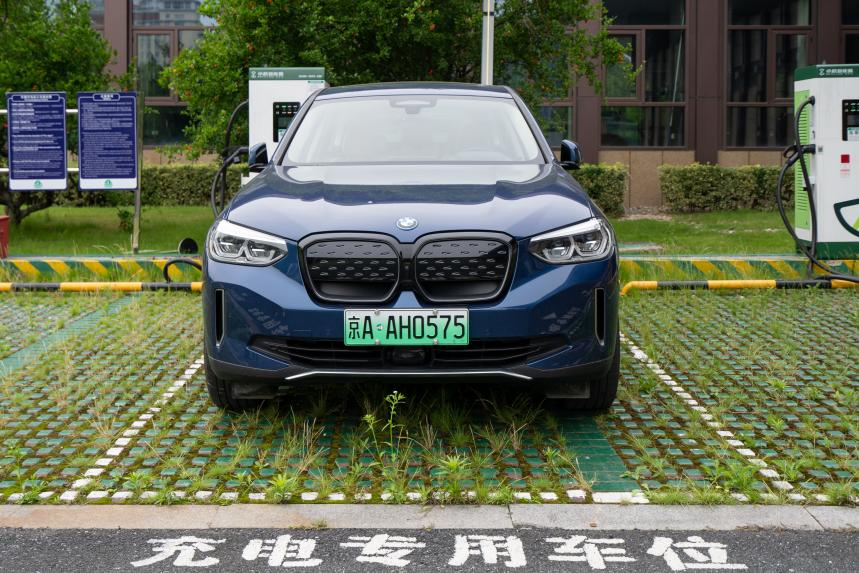
The iX3 looks very BMW-like both inside and out. It looks so much like the X3. Of course, since they have almost the same name, it is not surprising that they have a consistent style and human-machine interface. However, it also has its own unique features, such as the distinctive aerodynamic wheels and semi-enclosed “nostrils”, which show its identity as a new energy vehicle.
First, let’s take a look at the basic data of this car: length of 4.74 meters, wheelbase of 2.86 meters, 0-100 km/h acceleration time of 6.8 seconds, and a top speed of 180 km/h.
There are two models of this car, one priced at 399,900 yuan and the other priced at 439,900 yuan, with NEDC ranges of 500 and 490 kilometers, respectively. They are equipped with 19 or 20-inch aerodynamic wheels, while the differences in HUD, seat materials, comfort, and technology configuration.
The car we experienced in this test was the top-of-the-line model, which already included the Comfort Package (wireless phone charging, keyless entry and start), Entertainment Package (Harman/Kardon sound system, sound simulation), Innovation Package (driving recorder, automatic parking), and also the additional option of iDrive gesture control system.
Family-style interior design, with some ingenuity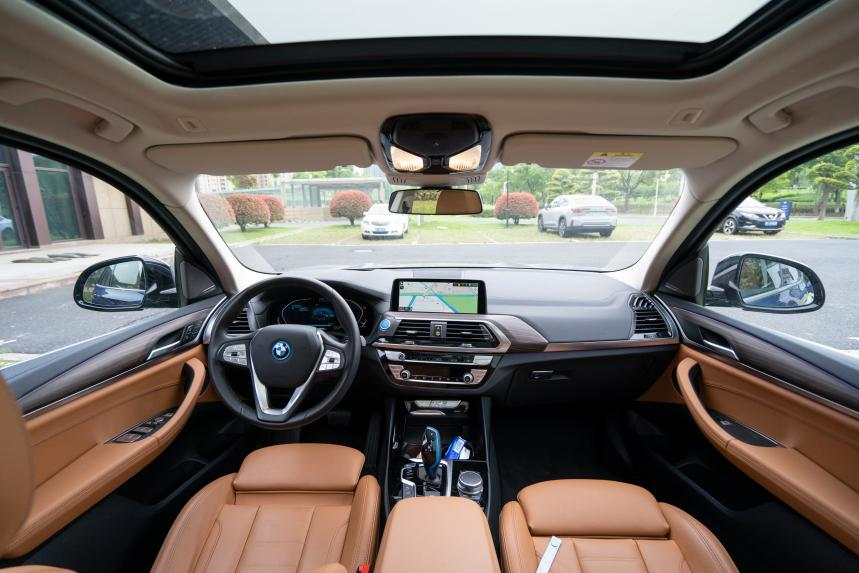
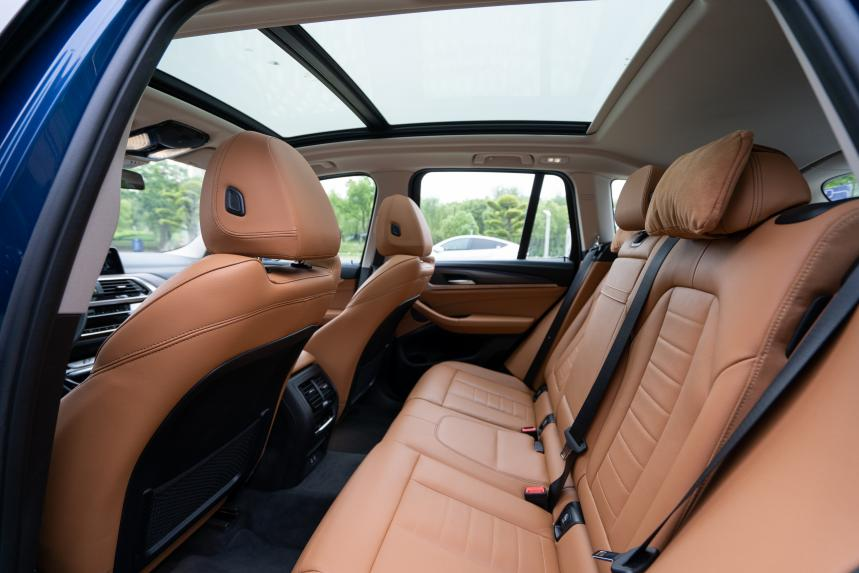
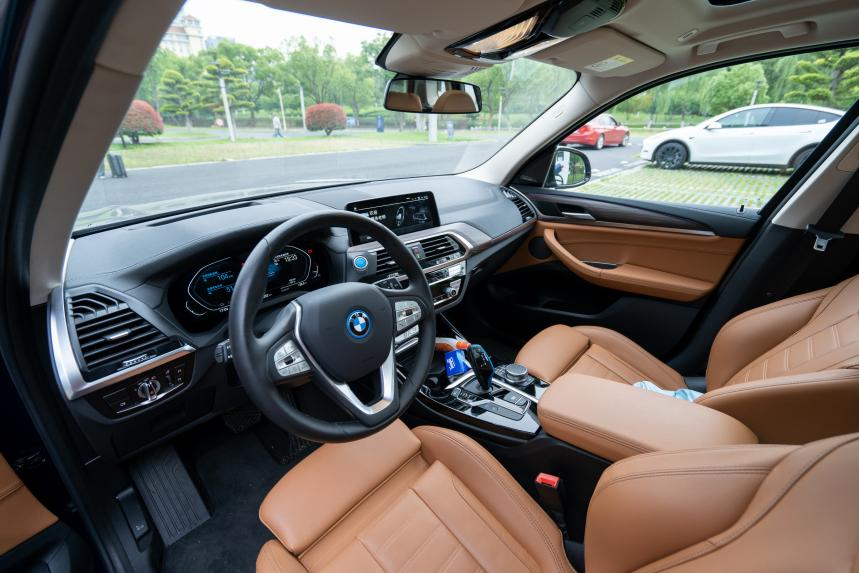
The interior of the iX3 is almost the same as the X3. All the commonly used features, including lighting, air conditioning, multimedia, and driving mode, have physical buttons in familiar locations, and the center console is also slightly tilted towards the driver.
The seats support full-directional electric adjustment, and the “wings” on both sides of the front seats can be adjusted in width to improve the seat’s wrap-around performance. Subjectively, the seats are comfortable and provide good support during cornering.
The rear space has not been sacrificed due to the transformation into a pure electric vehicle. The headroom is still very spacious. The design of the seat headrests is very scientific, and the intuitive feeling is that it is “just right to rest your head on”.
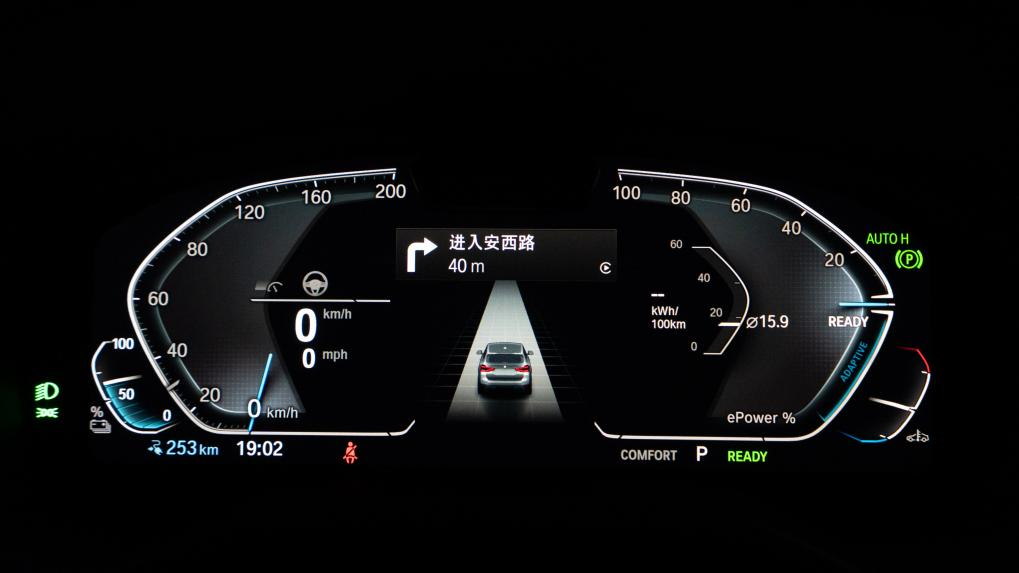
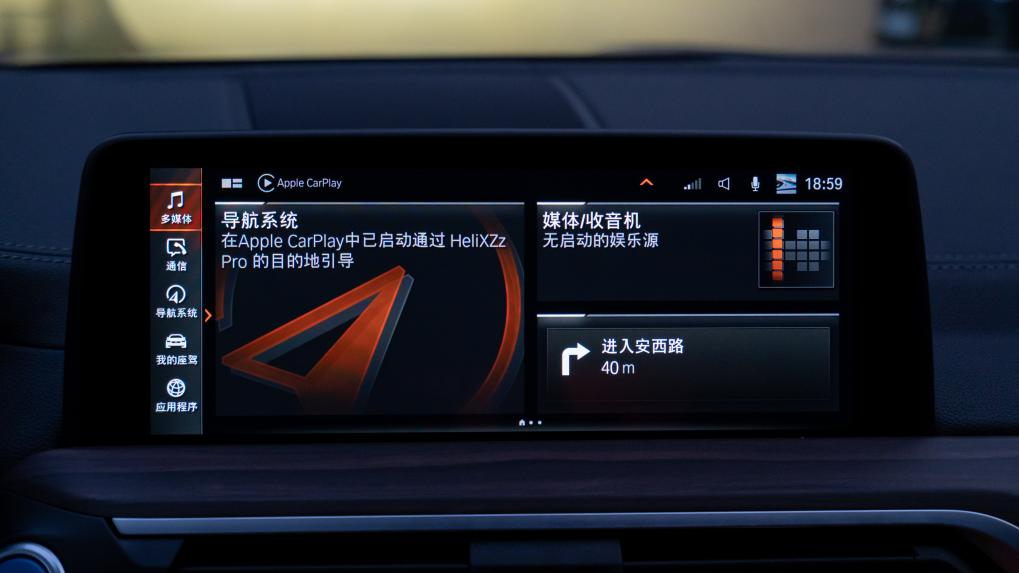
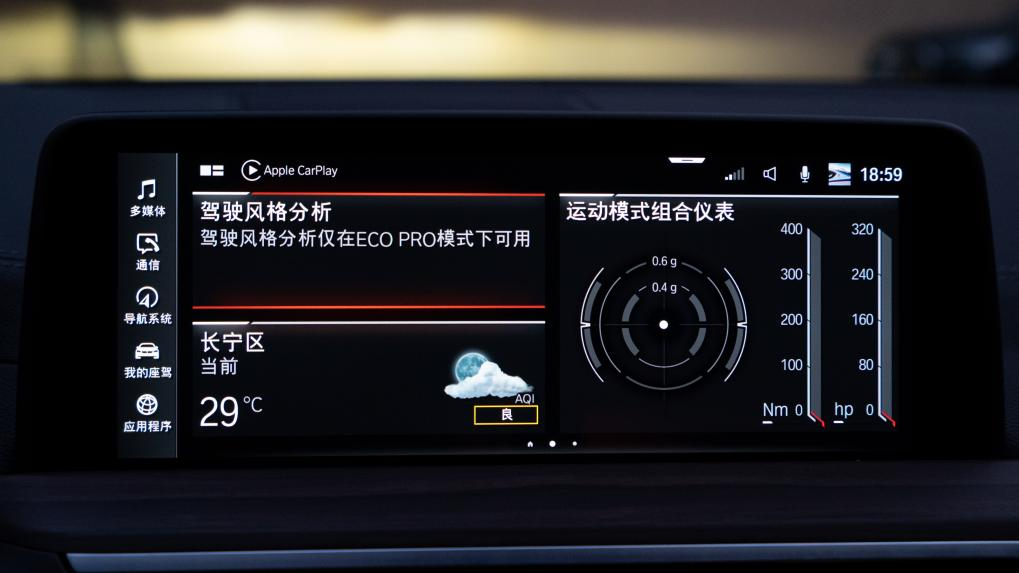
The instrument panel and the center control screen provide a lot of information and are laid out reasonably with a sense of design and style.
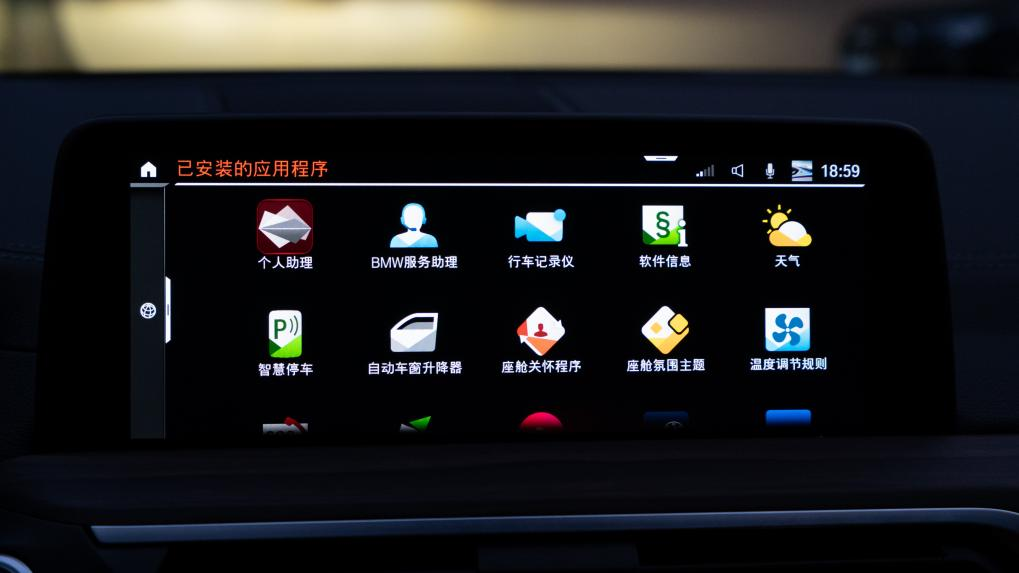
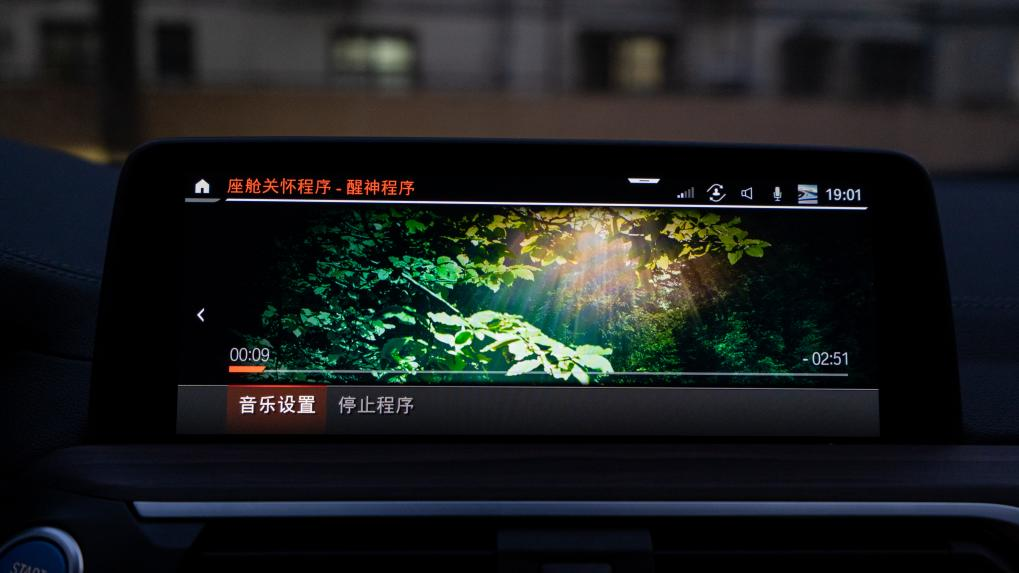 The seventh generation BMW iDrive human-machine interaction system is equipped with wireless CarPlay and CarLife mobile phone connections. The system also has built-in online media services such as QQ Music and Himalaya, and can also install some third-party platform Apps.
The seventh generation BMW iDrive human-machine interaction system is equipped with wireless CarPlay and CarLife mobile phone connections. The system also has built-in online media services such as QQ Music and Himalaya, and can also install some third-party platform Apps.
There are also some unique features in iDrive, such as the “cockpit care program” which combines air conditioning, music, and sunroof control to provide a 4D cinema-like experience.
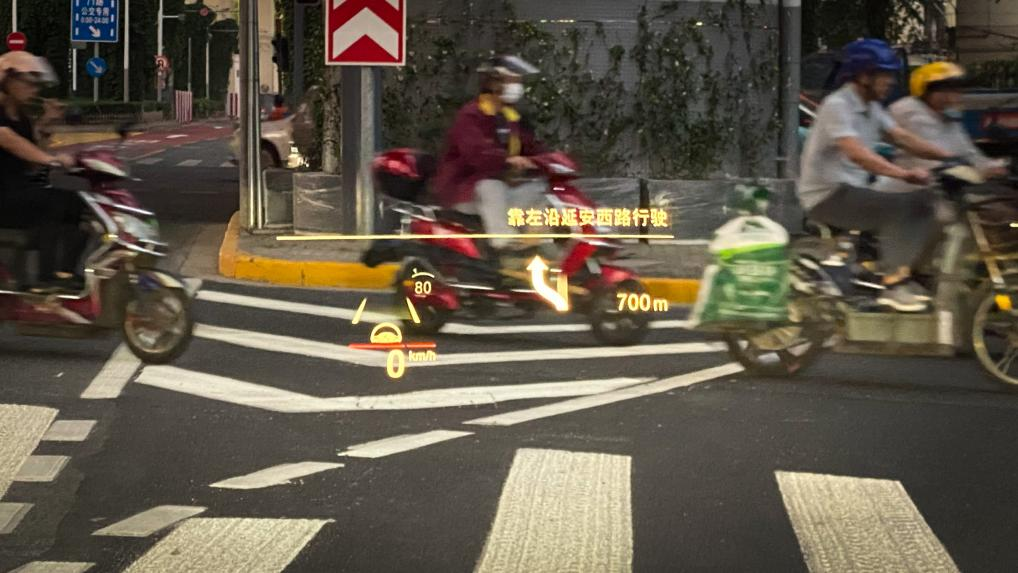
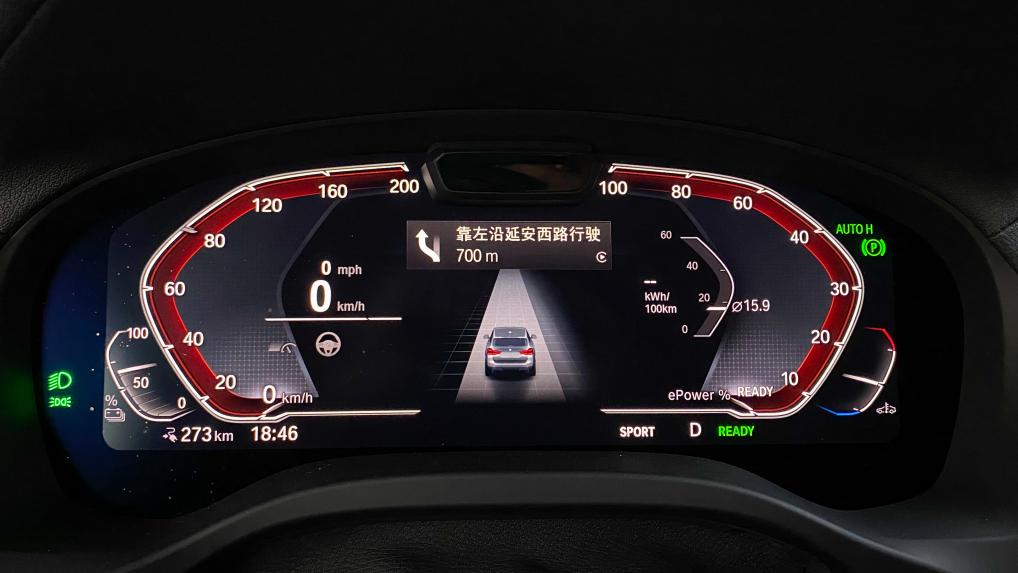
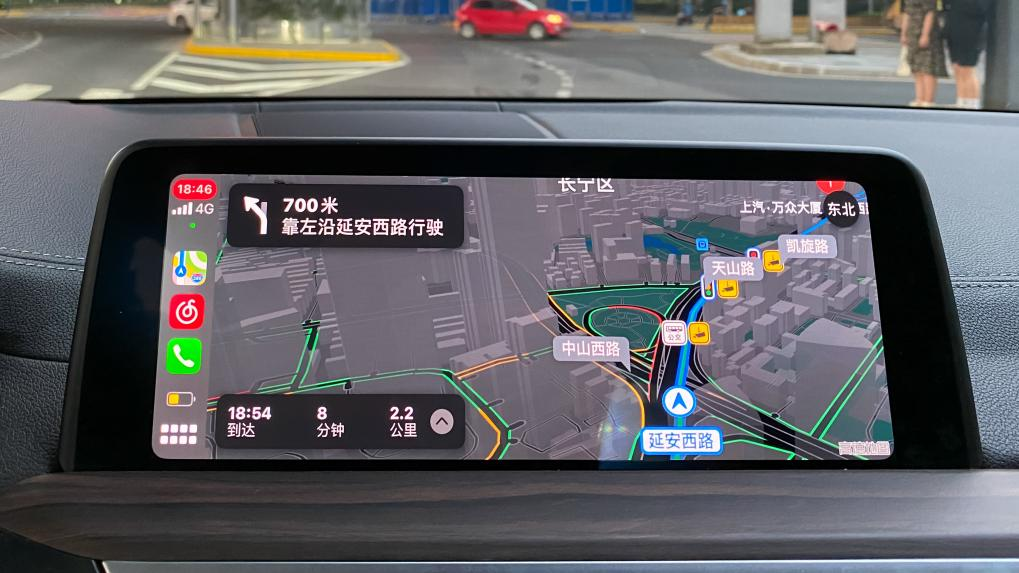
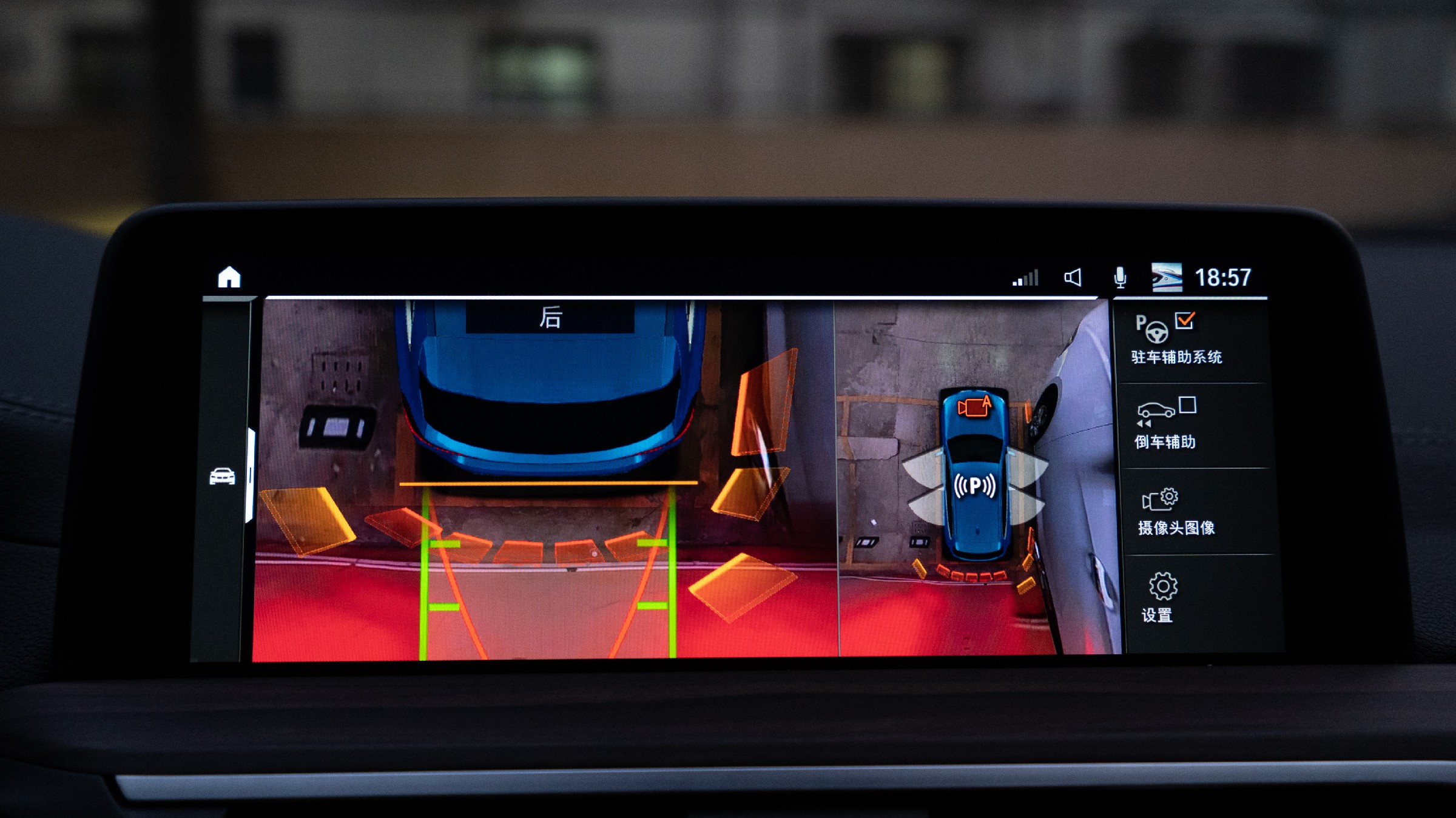
It is worth mentioning that BMW iDrive is deeply integrated with Apple iOS, which is very easy to use. It will automatically connect to wireless CarPlay when getting into the car, and can project real-time navigation information on the dashboard and HUD, providing a first-class experience.
Previously, Audi was considered a symbol of “breaking through technology and inspiring the future”, but after using iDrive, Audi MMI is really inferior…
In addition to iDrive, all other configurations that should be included in this price range are also available, and the electronic system is well-equipped with enough standard features, unlike the notorious “optional maniac” Audi.
The standard panoramic imaging system not only provides a God’s-eye view when reversing but also has a 3D view that reflects the distance detected by the radar in the form of a 3D virtual wall, which is impressive.
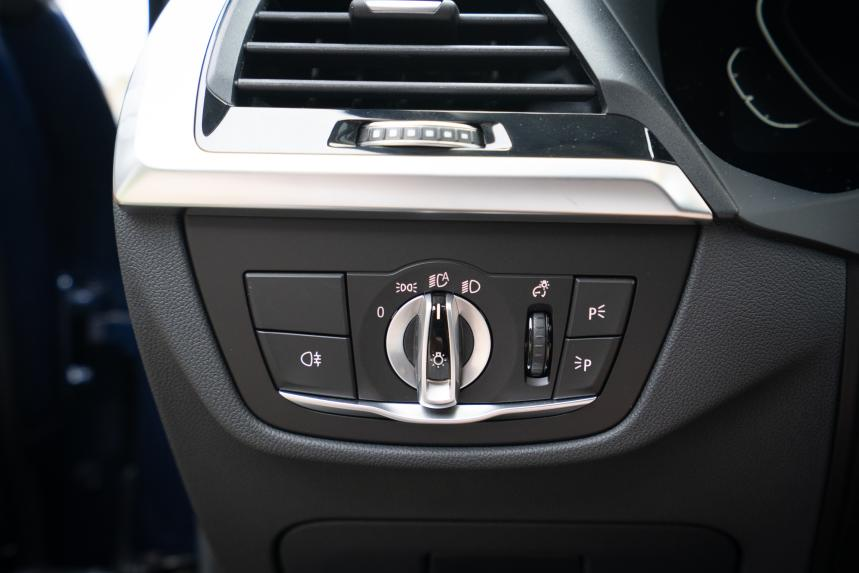
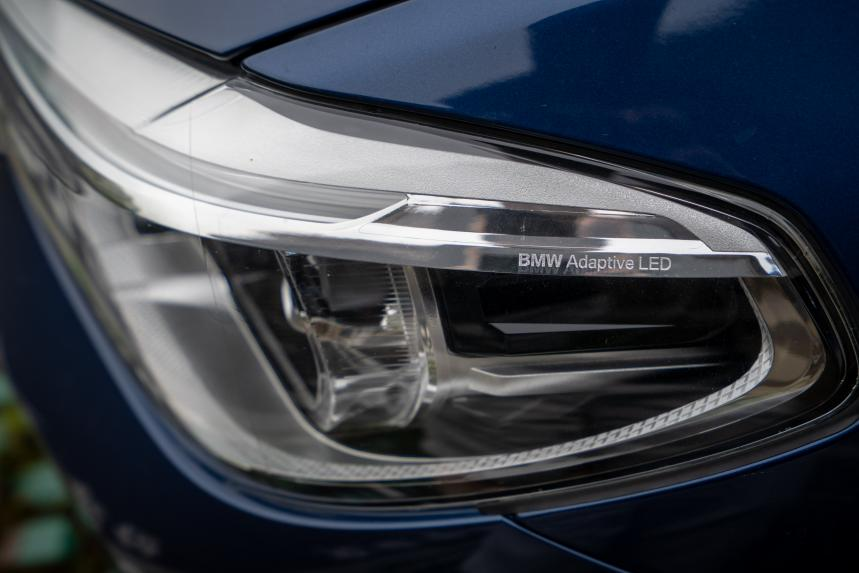 # Adaptive Matrix LED Headlights
# Adaptive Matrix LED Headlights
The adaptive matrix LED headlights provide excellent illumination for nighttime driving by combining with the front camera to light up the road, both sides, and the high-altitude signs without dazzling the preceding or oncoming vehicles.
Rear Seat Features
Equipped with independent air conditioning control panel, air outlets, and two USB-C charging ports.
Scene-Based Driving Assistance
Greatly reduces driver fatigue.
What is Advanced Driving Assistance?
Ignoring the demo in a limited scenario, the “advanced driving assistance” that the already-launched models can achieve at most is actually just the L2 level. So what is advanced driving assistance and what can it do to help drivers?
A Brief History of Driving Assistance Features
Various “driving assistance features” have actually existed since the era of gasoline vehicles. For example, early cruise control has gradually developed into adaptive cruise control (ACC), lane-keeping assistance (LKA), and lane changing assistance.
The Development of Current L2 Level Driving Assistance Systems
In the current stage, the L2 level driving assistance functions of the emerging automakers have no fundamental difference from the solutions used by traditional automakers in terms of the perception hardware at present, which are still the combinations of cameras, millimeter-wave radars, and ultrasonic radars.
Although it has not yet supported assisted driving according to navigation (automatic entrance and exit ramps based on the path, automatic lane selection, and automatic overtaking of slow-moving cars), the iX3 equipped with a three-camera forward-facing camera and millimeter-wave radar solution supports many scenarios, and it operates very smoothly and reliably.
iX3 Display for Driving Assistance Functions
When the driving assistance is turned on, the full-color HUD of iX3 shows very rich information. Compared with that, the information displayed on my EC6 HUD is relatively simple.
-
The little car icon in the upper left corner indicates whether there is a vehicle within the detection distance in front.- The green road sign and steering wheel indicate that the assisted driving mode is activated. The length of the road represents the following distance. If the driver needs to take over, a red flashing warning and animation of the steering wheel dropping down will remind the driver.
-
The horizontal line above the speedometer represents the current driving mode (blue: ECO PRO; gray: COMFORT; orange-red: SPORT).
-
Navigation information is displayed on the right side, with Chinese path prompts for approaching exits (and can display CarPlay navigation content) and lane prompts for approaching intersections.
In actual experience, the lane changing signal of iX3 left a deep impression on me.
Gently flicking the turn signal lever, iX3 will immediately make a judgment and quickly complete the lane change under safe conditions. If there is a car in the lateral and rear direction, iX3 will wait for about 10 seconds. If it still cannot change lanes, it will automatically give up.
If the speed is suppressed by the front car before changing lanes, the vehicle will immediately accelerate after the lane change. It only takes three to four seconds to go from 80 to 110 km/h. The whole process is smooth and decisive, and this driving style is very “experienced”. Compared to my sluggish Nomi at home, which is obviously slower when it comes to lane changing even after upgrading to NIO OS 2.10.0, iX3’s performance is really surprising.
Is it unsafe to change lanes so quickly? I was worried at the beginning of use, but when I myself had some slightly dangerous lane change actions (the vehicle in the lateral and rear direction was very close or accelerating), iX3 directly pulled me back to the original lane with one steering wheel move. It seems that the blind spot radar response is very sensitive, which gave me a sense of reassurance.
What surprised me even more was that the automatic parking operation of this car was also very bold. In the process of trying several times, the vehicle parked at a very extreme distance every time, which really impressed me.
There are some other features that I haven’t had the chance to try out yet, which is a bit regretful due to the duration of the test drive.
Confident Control, No Range Anxiety
Usually, I commute 60 kilometers per day, including both high-speed and congested city roads. During this two-day test drive, I traveled through two cities, suburban and downtown areas, covering various road conditions.The new forces in the auto industry generally have exaggerated performance parameters. However, iX3 did not choose to pile up materials. In terms of power output, sometimes iX3 even feels more like a naturally aspirated gasoline car, which gives people a lot of confidence.
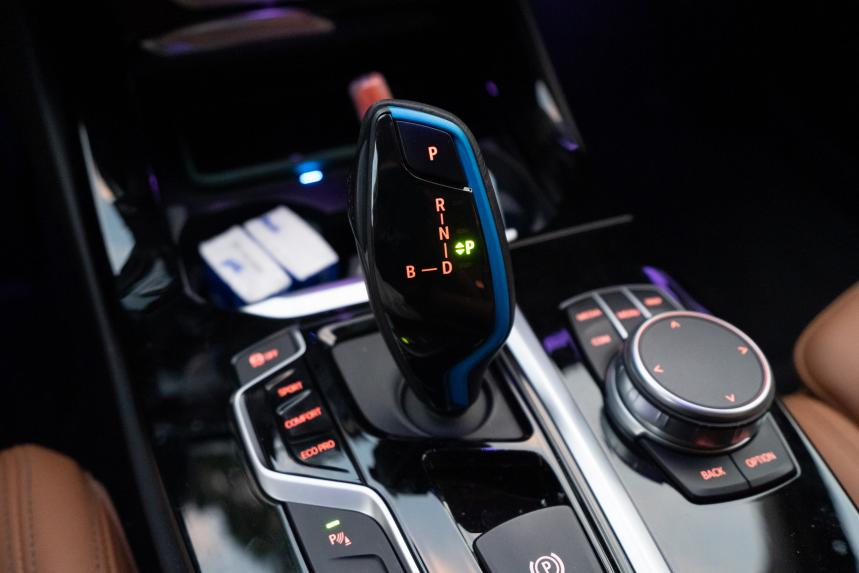
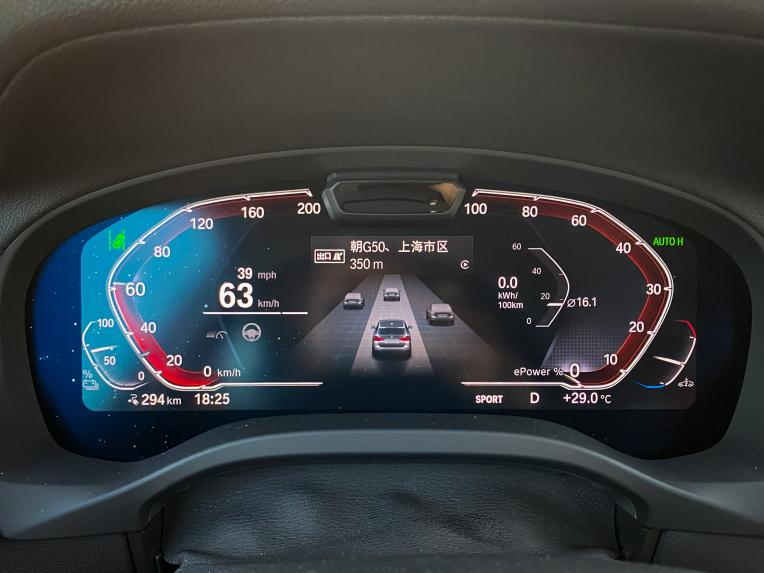
Why is this so? After some thought, there are at least three reasons.
First of all, the power response is linear enough, and iX3 does not “shoot” at all when driven. Although there is room for improvement, the response is not slow and can execute the driver’s intentions relatively well. In contrast, most Tesla and domestic new energy vehicles have accelerator pedals that are very sensitive, and even in comfort mode, they still require careful control to drive relatively smoothly. This requires too much micro-operation, and is still not smooth or natural enough.
Secondly, iX3 has adaptive kinetic energy recovery capabilities, and the mechanical brakes and CRBS are very natural, effortless, and maintain a safe distance from the front car when the accelerator pedal is released.
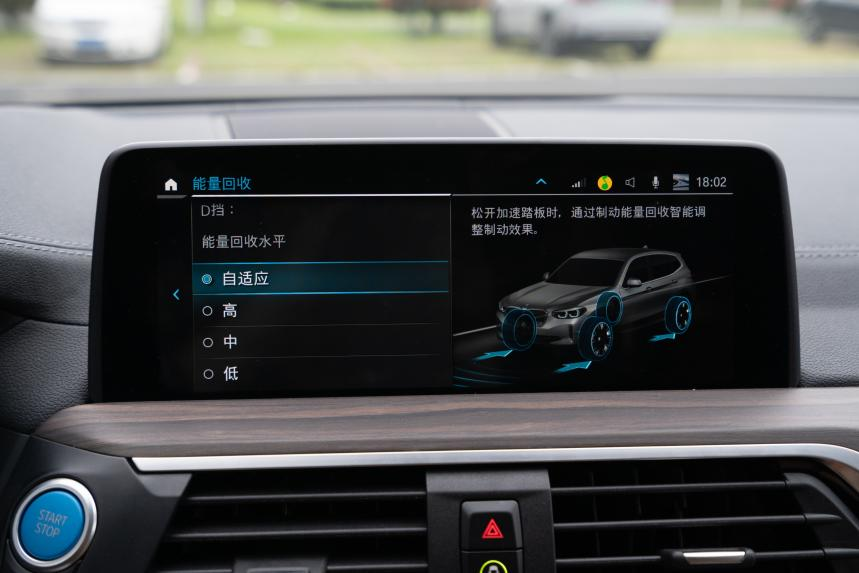
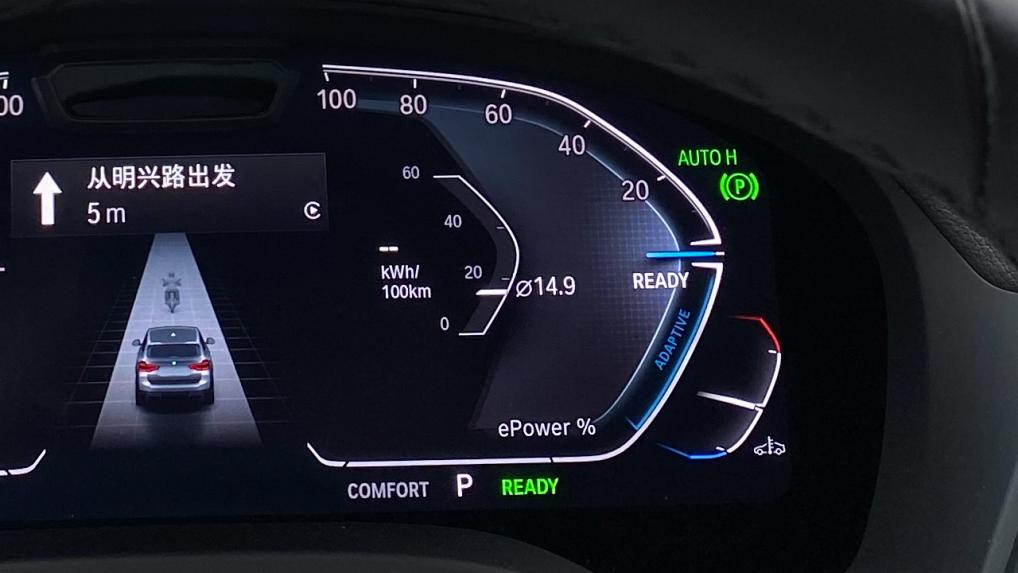
Regarding adaptive kinetic energy recovery, it is worth mentioning that this is a function that deserves to be “blown up.”
Why do electric cars need kinetic energy recovery?
- When braking, kinetic energy is converted into heat energy, which is wasted and it is better to reclaim it to increase the range.
So when do you need kinetic energy recovery?
- Naturally, when you need to decelerate.
The above logic is also one of the origins of the single-pedal mode. We often drive either accelerating or decelerating, and as long as we don’t need to accelerate, we start to recover kinetic energy, which sounds like it can indeed maximize the range.
However, there are also many times when we just want to drive at a constant speed, right?
At this time, you only have two choices:
-
Use precise footwork to control the accelerator pedal to the right position, commonly known as the “golden right foot.” If not controlled well, the car will be jerky, causing the driver and passengers to rock back and forth.
-
Release the accelerator pedal, let the car gradually decelerate, and then step on the accelerator pedal to gradually accelerate, maintaining the cruising speed roughly.The problem that has long plagued electric vehicle owners is range anxiety. However, adaptive energy recuperation almost solves this problem perfectly.
-
Vehicles monitor road conditions ahead in real-time through front radar and cameras.
-
When there are no other vehicles, traffic lights, or over-speeding detected, no energy recovery is triggered, and the vehicle coasts in neutral, maintaining current speed.
-
When following a car, the closer the distance, the stronger the regenerative force.
As a result, even in stop-and-go traffic, the vehicle can always maintain a proper distance from the preceding car by lifting off the accelerator, and mechanical brakes are rarely needed.
Finally, the suspension system tuning is meticulously calibrated, with a taut setup that offers excellent body support during high-speed turns while also filtering out uncomfortable vibrations by precisely transmitting road surface conditions. In my opinion, this tuning ability truly reflects the profound engineering and extensive experience of traditional manufacturers. In comparison, although having decent hardware, there is still room for improvement in the tuning of my EC6, and occasionally, there is a feeling of oscillation while driving, with insufficient support, like driving a boat.
After all, electric vehicles are still vehicles, and in terms of fundamental vehicle performance, the iX3 accentuates its strengths and mitigates its weaknesses, fully living up to BMW’s reputation.
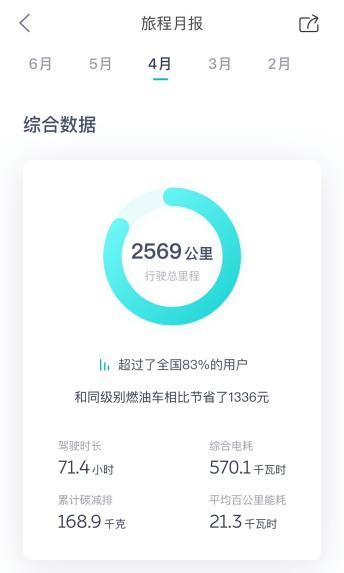
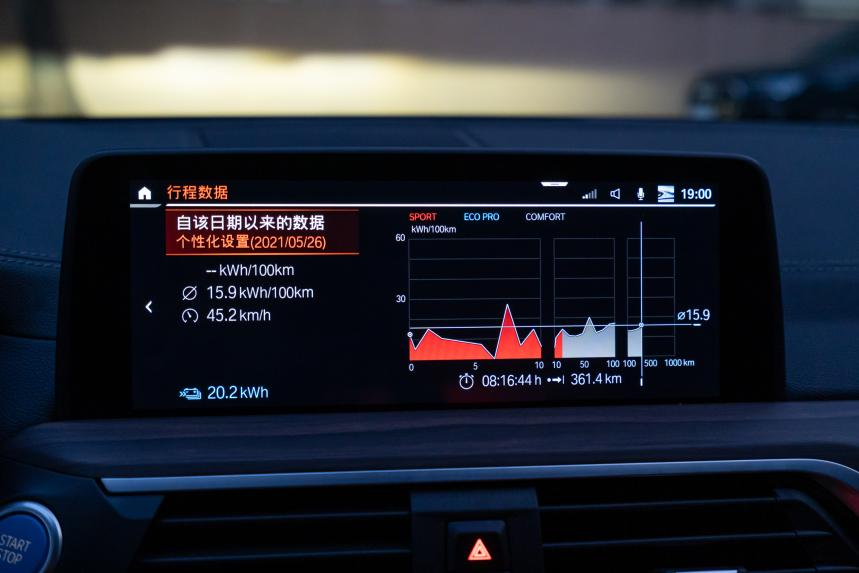
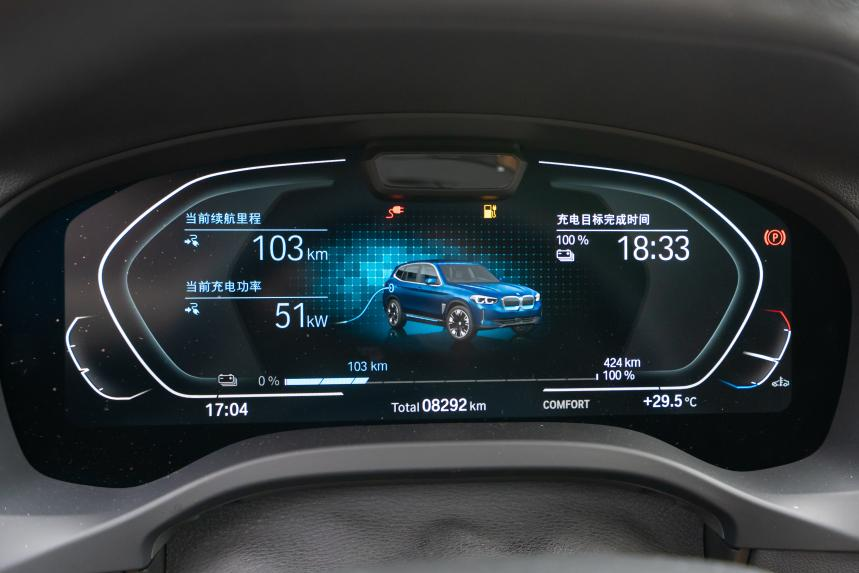
One major issue that disturbs electric vehicle owners is range anxiety, but the iX3’s two-day road test proves that its range performance is quite satisfactory.
The iX3 is equipped with a 74 kWh battery pack, with a nominal range (NEDC cycle) of 500 kilometers. In contrast, my NIO EC6, on the other hand, comes with a 70 kWh battery pack (100 kWh requires an extra fee), with a nominal range of 440 kilometers.
Looks similar, right? Not really.

Differences in size, weight, electric powertrain performance, and efficiency make a significant difference in the actual range capability of the two vehicles.During actual driving, it is impossible for us to always drive from full battery to empty and then recharge. Assuming we calculate the available range based on 80% after trimming the ends, the iX3 can travel 40% farther than the EC6 with only an additional 4 kWh of electricity per trip. For long-distance travel, this means we can save time by charging less frequently.
Furthermore, the remaining range displayed by the iX3 is based on real-time electricity consumption calculation, rather than the “nominal value” obtained by multiplying the battery percentage and the nominal range. This means that unless the road conditions change extremely (e.g. from downhill to uphill), the remaining range displayed on the dashboard is always accurate, which is very honest. Absolute range and accurate feedback on remaining range are two different things, and the latter directly affects the driver’s confidence in “how far can we go next”, which in turn directly affects the degree of “range anxiety”.
As for charging, the slow charging port is located on the left front fender, and the fast charging port is located on the right rear (like the fuel inlet of a gasoline car), making it easy to use. Charging can also be scheduled and a custom threshold can be set.
When we talk about a good car, what are we talking about?
There have always been two views on cars. Some people regard cars as commuter tools, pursue comfort and convenience, and hope to participate in driving activities as little as possible; others are the opposite. They enjoy the pleasure of driving and hope to have more control.
BMW obviously firmly stands on the side of the latter view. Their actions are just like their slogan: “Sheer Driving Pleasure”.
Unlike NIO’s concept of turning the car into a mobile living room, BMW chose a more driver-centric approach for the iX3, with all the layout and design based on ease of operation.
At the same time, as an SUV, it provides exceptional driving experience, practical space, solid range, comfortable riding experience, and considerate and convenient auxiliary configurations. Different strokes for different folks. In my opinion, the iX3 is a well-balanced car overall.
On the way back, I couldn’t help but wonder if my choice would have been different if this test drive had happened six months ago.
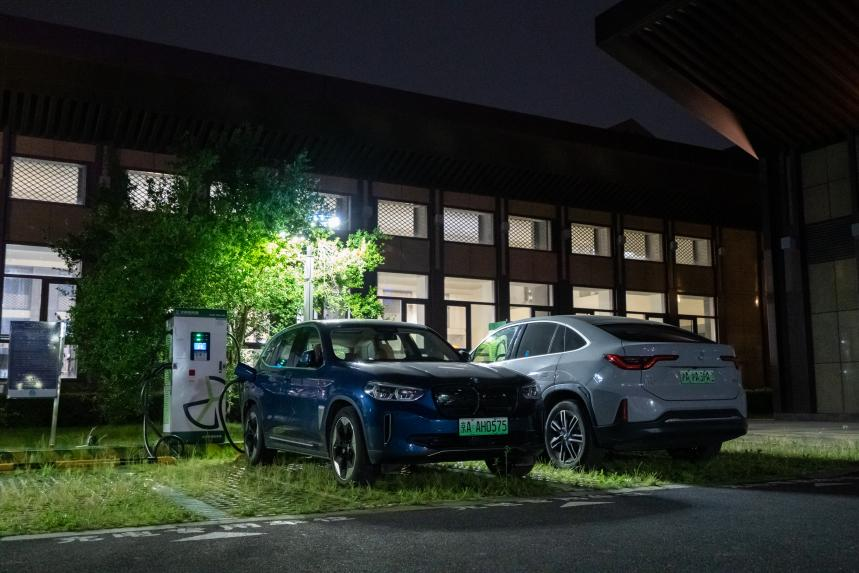
This article is a translation by ChatGPT of a Chinese report from 42HOW. If you have any questions about it, please email bd@42how.com.
